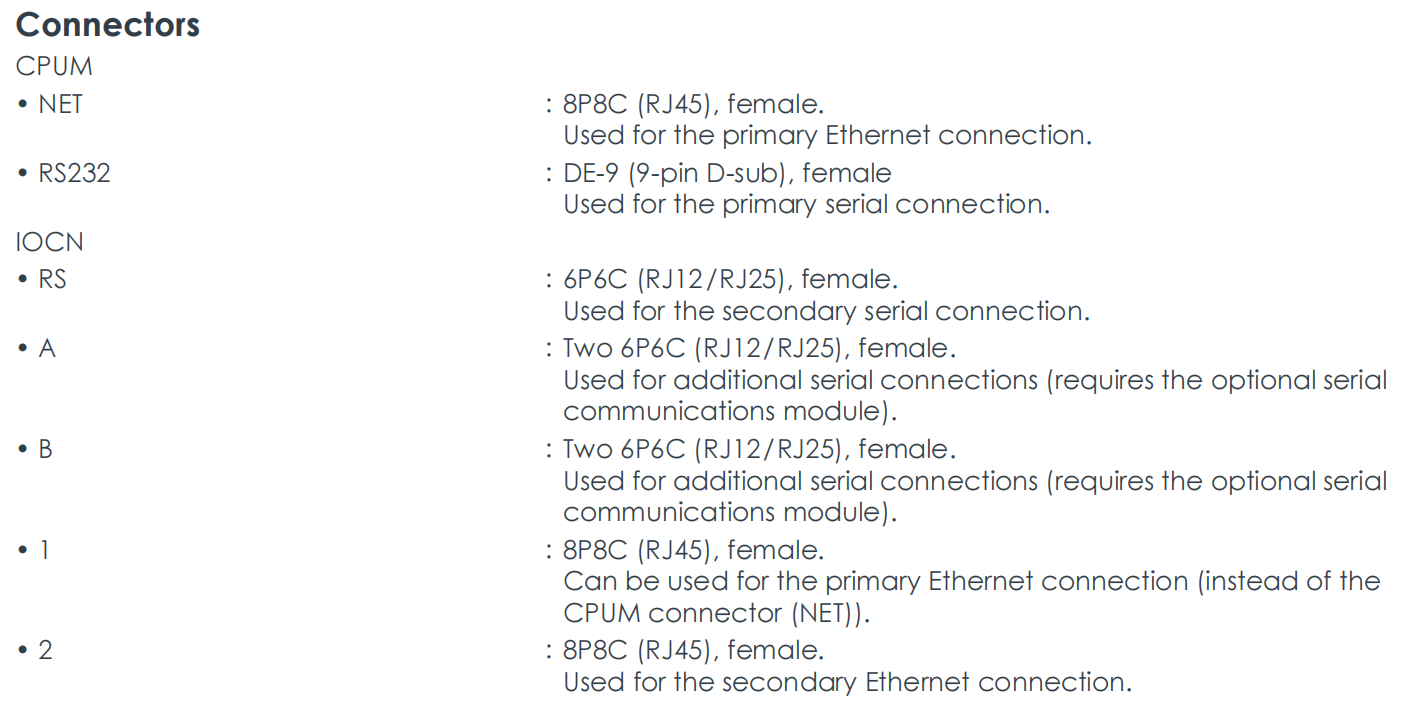IOCN 200-566-000-113 input/output card
Description
| Manufacture | Others |
| Model | IOCN |
| Ordering information | 200-566-000-113 |
| Catalog | Vibration Monitoring |
| Description | IOCN 200-566-000-113 input/output card |
| Origin | China |
| HS Code | 85389091 |
| Dimension | 16cm*16cm*12cm |
| Weight | 0.8kg |
Details
CPUM/IOCN card pair and racks
The CPUM/IOCN card pair is used with a ABE04x system rack and a CPUM card can be used either alone or with an associated IOCN card as a card pair, depending on the application/system requirements.
The CPUM is a double-width card that occupies two rack slots (card positions) and the IOCN is a single-width card that occupies a single slot. The CPUM is installed in the front of the
rack (slots 0 and 1) and an associated IOCN is installed in the rear of the rack in the slot directly behind the CPUM (slot 0). Each card connects directly to the rack’s backplane using two
connectors.
Note: The CPUM/IOCN card pair is compatible with all ABE04x system racks.
CPUM rack controller and communications interface functionality The modular, highly versatile design of the CPUM means that all rack configuration, display and communications interfacing can be performed from a single card in a “networked” rack. The CPUM card acts as a “rack controller” and allows an Ethernet link to be established between the rack and a computer running one
of the MPSx software packages (MPS1 or MPS2).
The CPUM front panel features an LCD display that shows information for the CPUM itself and for protection cards in a rack. The SLOT and OUT (output) keys on the CPUM front panel are
used to select which signal to display.
As a fieldbus communications interface for a monitoring system, the CPUM communicates with MPC4 and AMC8 cards via the VME bus and with XMx16/XIO16T card pairs via an Ethernet link in order to obtain measurement data and then share this information with third-party systems such as a DCS or PLC.
LEDs on the CPUM front panel indicate the OK, Alert (A) and Danger (D) status for the currently selected signal. When Slot 0 is selected, the LEDs indicate the overall status of the whole rack.
When the DIAG (diagnostic) LED shows green continuously, the CPUM card is operating normally, and when the DIAG LED blinks, the CPUM card is operating normally but access to the CPUM card is restricted due to MPS rack (CPUM) security.
The ALARM RESET button on the front panel of the CPUM card can be used to clear the alarms latched by all protection cards (MPC4 and AMC8) in the rack. This is a rack-wide equivalent
of resetting alarms individually for each card using discrete signal interface alarm reset (AR) inputs or MPSx software commands.
The CPUM card consists of a carrier board with two PC/104 type slots that can accept different PC/104 modules: a CPU module and an optional serial communications module.
All CPUM cards are fitted with a CPU module that supports two Ethernet connections and two serial connections. That is, both the Ethernet redundant and serial redundant versions of the card.
The primary Ethernet connection is used for communication with the MPSx software via a network and for Modbus TCP and/or PROFINET communications. The secondary Ethernet connection is used for Modbus TCP communications. The primary serial connection is used for communication with the MPSx software via a direct connection. The secondary serial connection is used for Modbus RTU communications.
Optionally, a CPUM card can be fitted with a serial communications module (in addition to the CPU module) in order to support additional serial connections. This is the serial redundant version of the CPUM card.
The CPUM module’s primary Ethernet and serial connections are available via connectors (NET and RS232) on the front panel of the CPUM.
However, if the associated IOCN card is used, the primary Ethernet connection can be routed to a connector (1) on the front panel of the IOCN (instead of the connector on the CPUM (NET)).
When the associated IOCN card is used, the secondary Ethernet and serial connections are available via connectors (2 and RS) on the front panel of the IOCN.
IOCN card
The IOCN card acts as a signal and communications interface for the CPUM card. It also protects all inputs against electromagnetic interference (EMI) and signal surges to meet electromagnetic compatibility (EMC) standards.


The IOCN card’s Ethernet connectors (1 and 2) provide access to the primary and secondary Ethernet connections, and the serial connector (RS) provides access to the secondary serial
connection.
In addition, the IOCN card includes two pairs of serial connectors (A and B) that provide access to the additional serial connections (from the optional serial communications module) that can
be used to configure multi-drop RS-485 networks of racks.
Front-panel display
The CPUM front panel features an LCD display that uses display pages to show important information for the cards in a rack. For the CPUM itself, card run time, rack system time, rack
(CPUM) security status, IP address/netmask and version information are displayed. While for MPC4 and AMC8 cards, measurements, card type, version and run time are displayed.
For MPC4 and AMC8 cards, the level of the selected monitored output is displayed on a bargraph and numerically, with the Alert and Danger levels also indicated on the bar-graph.
Measurement identification (slot and output number) is shown at the top of the display.
















